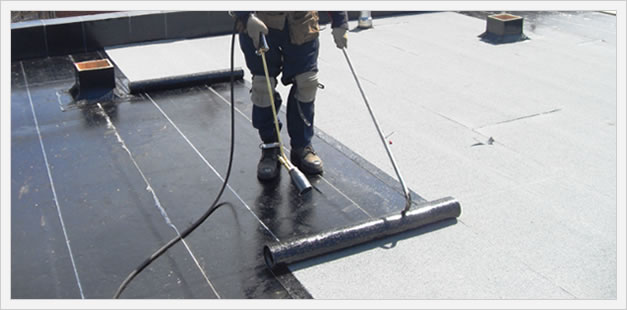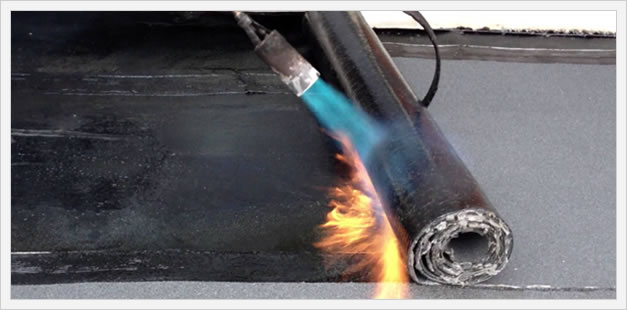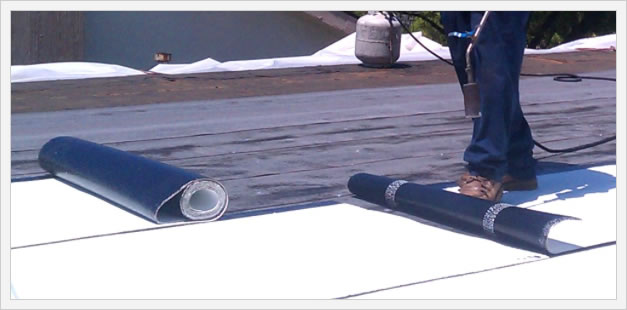
Torch Down Roofs
Torch down roofs are a rather messy and "old school" approach to residential roofing that is still popular for flat or low sloped roofs, primarily because they are cheap to install compared to other types of roofs. Torch down roofs are virtually the same thing as a modified bitumen roof.
Torch Down Basics

A torch down roof starts out with a primer that is applied to the underlayment. Fiberglass sheeting is then rolled onto the primed surface and secured in place using a nail gun. A layer of modified bitumen is then heated using a hand torch and then rolled onto the fiberglass sheet.
As the modified bitumen is slowly rolled, it liquifies and solidly adheres to the fiberglass sheeting underneath. Some torch down roofs use two layers of the modified bitumen , while others use three layers.
These roofs generally have a life span of 15 to 25 years, with an average life span of 20 years time. They require very little maintenance and, when done correctly, are quite nice looking (most homeowners spend very little time on their roofs, but it is still worth noting.) Torch down roofs are not considered a good cool roof alternative - see our cool roof cost per square foot to get an overall cost comparison.
Torch Down Roof Cost

A torch down roof tends to be slightly more expensive than an asphalt gravel roof. However, their maintenance costs are much lower the asphalt roofing option. In the long run, a torch down roof will save homeowners money over this tar and gravel option.
» Additional Information On Torch Rown Roofing Cost
-- Price Range: $3 to $6 psf fully installed --
Durability
Because a torch down roof is set down in layers, it tends to be exceptionally durable and strong. The material is flexible, enabling the roof to move without any cracks or breaks. This is ideal in extreme weather conditions. Areas that experience heavy snow and rain should stay away from this roofing type, as the weight may be too much and result in the roof collapsing.
Water Resistance

The good news for homeowners is that the torch down roof offers excellent water resistance. In most cases homeowners choose two layers, which can last 10 to 15 years. Adding an extra layer can improve water resistance and durability, as well as add another five years to the life span of the roof.
Maintenance
A torch down roof doesn't require much in terms of maintenance. Because the roof is often installed using a blow torch, repairs are quick and easy. Any gaps or cracks can be easily resealed, all it needs is a sheet applied to the area and the area being resealed. In some cases homeowners occassionaly will add a layer of sealant to the top layer to add to the durability and water resistance of the roof.
Disadvantages
Torch down roofs aren't the best choice for areas that experience high snow and rain. This extreme weather can be too heavy and the water isn't able to drain properly. This could have a disastrous result, with the roof actually collapsing.